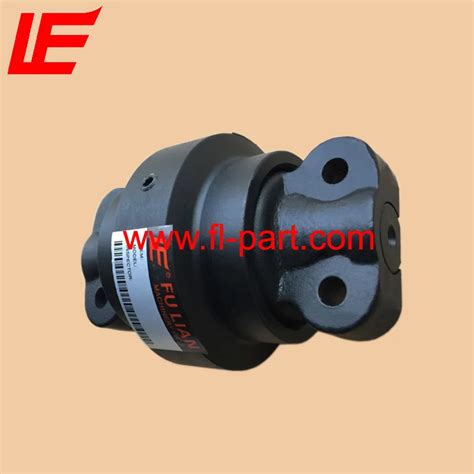mini excavator component names Even if your mini excavator rental spans just one day, it’s best practice to familiarize yourself with the equipment’s makeup. This is your handy guide to recognizing and understanding the different parts of a mini excavator. How to Widen Tracks on Mini Excavator To widen the tracks on your mini excavator, start by installing excavator track spacers and shoe spacers. This step makes the excavator more stable and efficient on tricky grounds.
0 · mitsubishi mini excavator parts
1 · mini excavator parts supplier
2 · mini excavator parts near me
3 · mini excavator parts for sale
4 · mini excavator parts diagram
5 · mini excavator parts catalog
6 · ihi mini excavator parts suppliers
7 · aftermarket mini excavator parts
Here in Maine, all of the excavator operators drive the excavator on the pavement to load up or unload. I'm talking up to 100' or so. When I lived in WA state, this was a major, major no no. It's weird that occasionally driving down the road, you think something is wrong with your car because you are hitting the damage(?) from the tracks on the .
Learn about the main parts of an excavator, such as boom, stick, bucket, cab, .
Learn the basic components of an excavator, whether you’re working with a mini or a skid steer. Find out how to operate the undercarriage, cab and arm/boom sections, and what attachments you can add to your excavator. Learn about the main parts of an excavator, such as boom, stick, bucket, cab, engine, undercarriage and hydraulic system. See diagrams and explanations of how they work together to perform various tasks in mining and construction. Understanding the role of the mini excavator parts – the undercarriage, cab, and arm/boom – provides a foundation for operating this versatile machine efficiently. In the following sections, we’ll explore these components and their functions in more detail.
Even if your mini excavator rental spans just one day, it’s best practice to familiarize yourself with the equipment’s makeup. This is your handy guide to recognizing and understanding the different parts of a mini excavator.
Learn about the essential parts of an excavator and their roles in the undercarriage, cab, and arm/boom sections. See diagrams and descriptions of tracks, pads, chains, sprockets, rollers, idlers, engine, hydraulic fluid .1. Composition. Chassis: Several components make up the mini excavator. The first is the chassis. This supports the rubber tracks. It is made up of a mechanically welded structure, usually in the shape of an 'X'. It is mounted on the undercarriage that carries the tracks (rubber or steel). Learn about the basics, features and options of mini excavators, also known as compact excavators. Find out how to customize your machine and get a free price quote from your local dealer.

Learn the names and functions of the main parts of an excavator, such as bucket, arm, boom, cylinder, track, hydraulic, engine, and more. See detailed diagrams and photos of each part and find replacement parts for your excavator. Learn about the different parts of an excavator, such as boom, arm, bucket, tracks, cab, engine, and hydraulics system. Find out the types, functions, and maintenance tips for each part and how to choose the right attachment for your job.
Key Components of Mini Excavators. 1. Cab. The cab is where the operator controls the excavator. It can be open or closed, with closed cabs providing better protection and comfort in adverse weather conditions.
Learn the basic components of an excavator, whether you’re working with a mini or a skid steer. Find out how to operate the undercarriage, cab and arm/boom sections, and what attachments you can add to your excavator. Learn about the main parts of an excavator, such as boom, stick, bucket, cab, engine, undercarriage and hydraulic system. See diagrams and explanations of how they work together to perform various tasks in mining and construction. Understanding the role of the mini excavator parts – the undercarriage, cab, and arm/boom – provides a foundation for operating this versatile machine efficiently. In the following sections, we’ll explore these components and their functions in more detail. Even if your mini excavator rental spans just one day, it’s best practice to familiarize yourself with the equipment’s makeup. This is your handy guide to recognizing and understanding the different parts of a mini excavator.
Learn about the essential parts of an excavator and their roles in the undercarriage, cab, and arm/boom sections. See diagrams and descriptions of tracks, pads, chains, sprockets, rollers, idlers, engine, hydraulic fluid .
mitsubishi mini excavator parts
1. Composition. Chassis: Several components make up the mini excavator. The first is the chassis. This supports the rubber tracks. It is made up of a mechanically welded structure, usually in the shape of an 'X'. It is mounted on the undercarriage that carries the tracks (rubber or steel).
Learn about the basics, features and options of mini excavators, also known as compact excavators. Find out how to customize your machine and get a free price quote from your local dealer. Learn the names and functions of the main parts of an excavator, such as bucket, arm, boom, cylinder, track, hydraulic, engine, and more. See detailed diagrams and photos of each part and find replacement parts for your excavator. Learn about the different parts of an excavator, such as boom, arm, bucket, tracks, cab, engine, and hydraulics system. Find out the types, functions, and maintenance tips for each part and how to choose the right attachment for your job.
mini excavator parts supplier
The unique '2GO' start up sequence on the JCB 19C-1 PC offers maximum safety for operators and bystanders. This second part shows how easy it is to start the.
mini excavator component names|mini excavator parts catalog